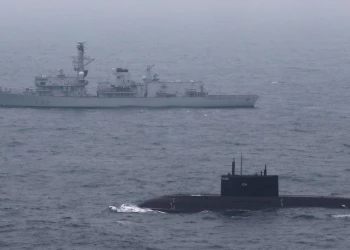Defence IQ Library: "Modern Insurgencies and Counter-insurgencies", by Ian FW Beckett
Add bookmarkThe book engages with the thematic notions of insurgency and counter-insurgency within a chronological framework, and grapples with the issues of ideological warfare, colonial resistance, relationships between insurgents and superpowers, and the transition to urban insurgencies such as the Baader-Meinhof Gang in West Germany.
Condensing 250 years of counter-insurgency history into 251 pages is not an easy task and, at times, Modern Insurgencies struggles. Beckett tries to track the development of insurgency and counter-insurgency techniques over the course of an era by comparing and contrasting different campaigns within the same time period. This is perhaps best highlighted by his comparison of the IRA campaign in Ireland to that of the Popular Front for the Liberation of the Occupied Arabian Gulf (PFLOAG) in Dhofar, against the Sultan of Omar, noting that while both insurgencies had sanctuaries from which they could operate, the PFLOAG were successfully isolated from the population by physical barriers, whereas the IRA were never successfully separated from the population. The rapid change of focus between case studies does illustrate the changes and developments of the campaigns and how they differ, but Beckett's transitions are often abrupt and can spoil the flow of the text, making Modern Insurgencies a challenge to read.
[inlinead]
Interestingly, in spite of Beckett's professional academic background, the referencing style in Modern Insurgencies is nearly non-existent. Rather than employ the Harvard or Chicago or any of a number of other styles, Beckett simply opts out of having to explain or cite where he extracts his facts and figures. No source is given, for example, to support this: ‘8th Special Forces Group based at Fort Gulick in Panama undertook over 400 separate missions in Latin America between 1963 and 1968, 53 of them in 1965 alone.’ This kind of rigor is particularly significant where figures like these are concerned, as they directly support his larger illustration of a coherent model of insurgency.
Instead of referencing, at the end of each chapter one is given a list entitled Further Reading. This is a list of books and articles, helpfully broken down into the sections of the chapter. For example, the chapter on Cold War insurgencies is broken down into lists on Vietnam, US counter-insurgency practices, Soviet experiences in Afghanistan and the like. This recommended reading section is the closest Beckett gets to referencing his information (without ever actually achieving it). Certainly, one may presume, in light of his long-standing history professorship, that his own students' work would fall down on this very point.
These Further Reading sections do have certain redeeming qualities. If you are reading the book for information on a specific topic - Counter-Insurgency in Dhofar, let us say - then, along with giving you an understanding of some of the context of the conflict, Beckett gives you a select set of sources which cover the topic. Some, in fact, are quite rare. In this respect, Beckett has done the lion's share of the work for those of us who seek to conduct further research.
Beckett’s Modern Insurgencies, while frankly quite difficult a read, was, for me, well worth the effort. It provides an overview of 250 years of the development of insurgency and counter-insurgency campaigns, as well as historical examples ad nauseaum. Many of these are covered in depth (some, however, are mentioned in passing). Despite its flaws, Modern Insurgencies and Counter-Insurgencies: Guerrillas and their Opponents since 1750, is a good starting point for anybody wanting to know about how strategies have developed and provides excellent context for the COIN campaigns in Afghanistan and Iraq.






















